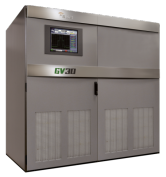1 INTRODUCTION
A good transmitter site can ensure many years of reliable performance, while a bad site will result in unpredictable or unsatisfactory performance. This paper identifies the characteristics of a good site and provides advice on how to achieve these.
1.1 Potential Threats:
There are many threats to electronic payloads at a transmitter site. Some of these are common to any modern electronics system, while others are unique to the mission performed by a transmitter. The following must be considered:
- lightning
- man made power line transients
- high electromagnetic (EM) fields near an antenna
- arcing in the impedance matching/phasing networks, RF feed cables (birds etc)
- cooling problems
- routine maintenance activities
- repair activities
- entrance of foreign matter (snakes, rodents, etc.)
1.2 Advantages:
It is now accepted that there are many advantages to a fully solid state transmitter. Some of these are:
- high efficiency (85% typical)
- no tube to wear out
- lower DC voltages
- redundancy
- modularity allowing on air servicing
- improved audio performance
- increased modulation capability
The advantages are only realized when due attention is given to the potential threats. It may not be possible to gain the advantages available from solid state transmitters at existing tube-transmitter sites by simply replacing the transmitter. A complete audit of the site is needed, with possible upgrading in areas highlighted in the rest of this paper.
While this information is intended to be valuable, it is not a substitute for a competent site contractor.


